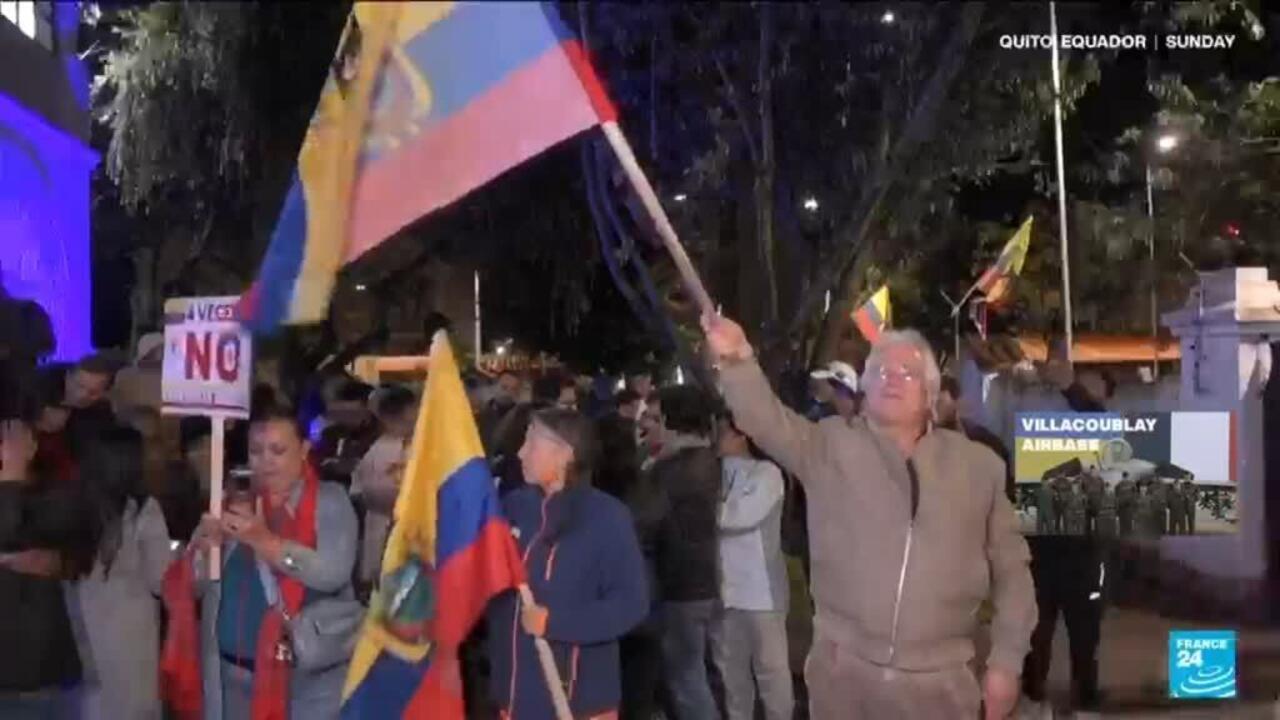Meanwhile, in Warsaw and Vilnius, shoppers flee as flames engulf two of the largest city malls. Investigators soon discover the arsonists are teenagers recruited online, guided by encrypted messages, and paid by actors connected to hostile state agencies. The chaos sows fear, erodes social trust, and sends shockwaves through European communities—proxy sabotage that destabilizes societies while providing plausible deniability to those orchestrating the acts.
Thousands of kilometers away, Chinese dredgers and coast guard vessels silently transform disputed reefs into fortified islands in the South China Sea. With no declaration of war and no pitched battles, new airstrips and bases appear, steadily shifting maritime boundaries and economic interests. Each construction project redraws the strategic realities of an entire region, forcing neighbors and distant powers alike to reckon with incremental, shadowy coercion and efforts to change the status quo.
In early 2024, Chinese state-sponsored hackers, known as "Volt Typhoon," penetrated U.S data repositories and embedded themselves deep within the control systems of U.S. critical infrastructure, including communication networks, energy grids, and water treatment facilities.
Then-FBI Director Christopher Wray described it as a pre-positioning of capabilities by China that can be turned on whenever Beijing wanted - wreaking havoc and causing real-world harm to American citizens and communities. China has denied any connection to these attacks on U.S. sovereignty.
And just weeks ago, around 20 Russian drones violated Poland’s airspace. Russia’s denials were predictable and since then, Russian drones and jets have violated airspace in Romania, Estonia, and over the Baltic Sea.
Were these threats, tests of capability and resolve, provocations, or demonstrations—or maybe all of the above? Just as NATO will develop a set of lessons-learned for future incursions, it’s also likely that Russia learned from these episodes and will recalibrate future incursions.
Threaded almost invisibly through all of these gray zone activities, and countless others like them, is cognitive warfare—a persistent tool of our adversaries. It is an assault on cognition. The information and decision spaces are flooded with weaponized narratives, AI-powered disinformation, synthetic realities, and the coercive use of redlines and intimidation.
The goal is clear—deceive, change how we see the world, fracture societies, destroy faith in institutions and partnerships, erode trust, challenge and replace knowledge and belief, coerce and intimidate; and perhaps most importantly; undermine decision autonomy. It is here, in the crowded intersection of AI; cyber; traditional tools such as narratives and storytelling; and cognition; that today’s most urgent battles are fought.
These are all operations in the gray zone. We all use somewhat different terms for this, but let me share the definition of the gray zone that I think works well.
The gray zone is the geopolitical space between peace and war where adversaries work to advance their own national interests while attacking and undermining the interests of their adversaries and setting the conditions for a future war without triggering a military response.
We might refer to attacks in the gray zone as gray warfare. It is the domain of ambiguity, deniability, and incremental aggression calculated to limit deterrence and discourage persuasive response.
The 2026 Cipher Brief HONORS Awards are open for nominations. Find out more at www.cipherbriefhonors.com
Today, it is the space where global competition, particularly great power competition, is playing out.
Why are we seeing more gray zone activity today?
First, great power competition is intensifying. This includes great powers, middle powers, and impacts almost every other nation. Almost every nation has a role to play, even if involuntary: competitor, ally and supporter, enabler, spoiler, surrogate, or innocent bystander and victim. Like the African proverb says, “When elephants fight, it is the grass that suffers.”
But great powers will go to great lengths to avoid 21st Century superpower conflict, primarily because of the fear of unintended losses and damage to national power that could take decades to recover. The catastrophic damage to nations and militaries from WWII are distant—but still vivid—reminders of the impact of a war of great powers.
Today, just look at the unprecedented loss of national power by Russia in indirect superpower conflict. Superpower conflict has consequences. Given these strategic considerations, the gray zone and gray warfare provide an effective strategic alternative to conventional war. Our adversaries have calculated that there are more gains than risks in the gray zone, and that any risks they do face are acceptable.
Second, technology levels the playing field, creating new opportunities for gray zone attacks. Cyberattacks, even those that are disrupted, lead to more effective cyber capabilities by our adversaries. AI-driven cognitive warfare now delivers persuasive content with unprecedented global access and immediacy. Small kinetic drones can be wielded by state and non-state actors to pose both kinetic and cognitive threats. Technology also enables adversaries to conceal their operations and increase non-attribution. Even simple technologies have the potential to generate strategic effects in the gray zone.
Third, surrogates and proxies offer expanded reach, ambiguity, and impact
Little Green Men, hired criminals, ghost ships, unknown assassins and saboteurs, and shadowy companies that help evade sanctions blur attribution, providing bad actors with a veneer of deniability while increasing their reach, impact, and lethality. On a broader scale, Houthi attacks on global shipping and North Korean soldiers fighting Ukraine elevate the effects of this ambiguous warfare to a higher level. This trend is likely to intensify in the future.
Fourth, it is important to address the direct impacts of Russia’s war on Ukraine on an increase in gray zone attacks. Russia’s significant loss of national power and limited battlefield gains have created pressure on the Kremlin to reassert relevance, project power, and potentially punish antagonists. This dynamic almost certainly means a continued escalation of gray zone activities targeting Europe and aimed at destabilizing the continent. Many experts believe the Baltics and the Balkans may be particularly vulnerable.
That Russian gray bullseye is crowded—the U.S. is also a traditional target, and more Russia activity to undermine and weaken the U.S. is coming, despite Putin’s offers of renewed diplomatic and economic cooperation.
Finally, there are more gray zone attacks because real deterrence and persuasive responses to gray attacks are challenging, and our adversaries know it. In other words, gray zone attacks in most cases are relatively low cost, often effective, provide a level of deniability, and frustrate efforts at deterrence and response.
Our adversaries have calculated that they can hide behind ambiguity and deniability to violate sovereignty, ignore national laws and international norms, and engage in activities such as political coercion, sabotage, and even assassinations without triggering an armed response.
This “no limits” approach exploits the openness, legal norms, and ethical standards of democratic societies, making coordinated, timely, and effective response more difficult.
So, what can we do?
The most important outcome of our actions is to change the risk calculation of our adversaries. Gray zone attacks that go unanswered reward our adversaries and reinforce the idea that there are more gains than risk in the gray zone and encourage more attacks. Further, our adversaries calculate, often accurately, that our reasonable concerns for avoiding escalation will lead to indecision, weak responses, or the acceptance of false choices.
We need improved and shared gray zone intelligence to see through the fog of disinformation, synthetic realities, false risks and threats, and an overload of information by our adversaries to understand what is taking place in the gray zone. This not only strengthens our operations to counter gray zone attacks but it helps our citizens, communities, and countries to understand, recognize, reject, and remain resilient in the face of gray zone attacks.
We have to employ “strategic daylighting” to expose and put into context the gray zone activity by our adversaries—stripping away deniability and laying bare nefarious and illegal actions—knowing that our adversaries will go to great lengths to conceal, defend, and attack our efforts to expose their activities.
We have to speak frankly and convincingly to our adversaries and of course, we have to back up our words with persuasive action. Empty warnings and rhetoric will fall short. Changing the risk calculation of our adversaries means real consequences across a broad spectrum—public, diplomatic, economic, legal, informational, or even kinetic. It means a strategy on how to respond - not just a series of hasty responses. Real deterrence will result from planning and strategy; not decisions in the moment based on immediate circumstances.
Finally, we need to think of deterrence and response as a team sport - an “Article 5 mindset.” Our adversaries will seek to divide and isolate. Collective, unified action and resolve can form a powerful deterrent.
Of course, none of this is new. All of us need a solid understanding of the problems and the likely best solutions and implementation remains the greatest challenge.
We can go a long way with a good strategy, good partners, and resolve which seems like a reasonable place to start.
This Cipher Brief expert perspective by Dave Pitts is adapted from a speech he recently delivered in Sarajevo. Comments have been lightly edited for clarity. All statements of fact, opinion, or analysis expressed are my own and do not reflect the official positions or views of the US Government. Nothing in my remarks should be construed as asserting or implying US Government authentication of information or endorsement.
The Cipher Brief is committed to publishing a range of perspectives on national security issues submitted by deeply experienced national security professionals.
Opinions expressed are those of the author and do not represent the views or opinions of The Cipher Brief.
Have a perspective to share based on your experience in the national security field? Send it to Editor@thecipherbrief.com for publication consideration.
Read more expert-driven national security insights, perspective and analysis in The Cipher Brief

 1 month ago
19
1 month ago
19










 English (US) ·
English (US) ·